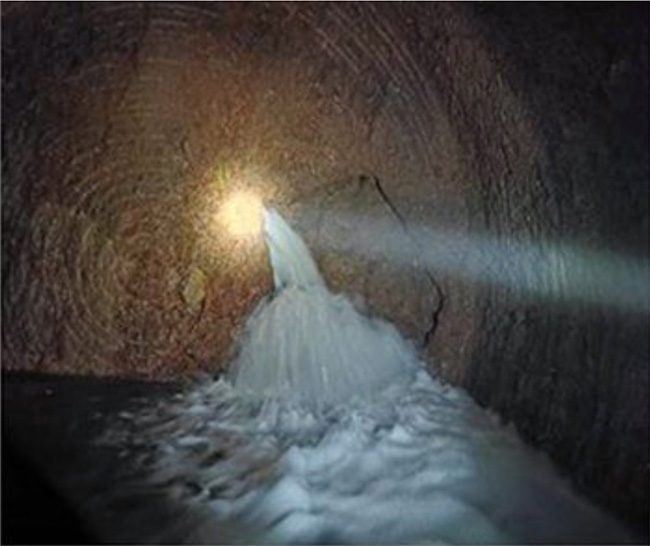This desert tunnel will bring clean water to arid and remote areas.
Excavating the longest tunnel in the world through the desert is an ambitious project by China. With this project, China hopes to turn a “dream come true” into reality by bringing meltwater from the Altai Mountains into the northern desert of Xinjiang.
Kashuang – the longest of the three major tunnels in the project – is expected to be constructed at a length of 280 km, double that of the Delaware Aqueduct, which is the main water supply tunnel for New York City. Since 1945, the Delaware Aqueduct has held the world record for the longest tunnel.
However, during the excavation of the tunnel through the desert in Xinjiang, Chinese engineers suddenly encountered a groundwater source. The rushing water created a “dilemma,” according to reports from SCMP. The cause of this unexpected challenge was not only due to Xinjiang’s complex terrain but also because nearly half of the conclusions drawn from geological surveys prior to construction were inaccurate.
“The high groundwater level causes the project to frequently flood. The construction progress is being severely affected,” stated Deng Mingjiang, a professor at the Chinese Academy of Engineering, in an article published in the journal Tunnel Construction.

Image of the water flooding incident during the construction of the world’s longest tunnel.
Mr. Deng Mingjiang mentioned that while the Kashuang project was under construction, large Tunnel Boring Machines (TBMs) unexpectedly penetrated into an “abnormally abundant” groundwater source. The gush of water was so intense that it could fill a swimming pool in one hour. This was something the Chinese engineers had not anticipated during the construction.
“Each time the flood alert light signals, workers must evacuate immediately. The giant TBM must also halt operations to avoid damage,” Mr. Deng wrote.
When operating in areas with groundwater, the TBM can only excavate 200 meters per month. This significantly increases the risk of delays for the desert tunnel project. Furthermore, the safety of the workers operating underground is also jeopardized.
To address this threat, Chinese engineers have employed a new method. Traditionally, ground-penetrating radar can detect the presence of water, but it only works when the drilling machine stops.
Mr. Deng’s team developed a new seismic detector that can be mounted on the TBM and utilizes vibrations to detect water and other obstacles behind rocks. The tunneling team will be prepared in advance for the risk of hitting groundwater. They will use pumps to remove water from the tunnel while another team will seal any leaks.
However, the TBMs will not be able to move until engineers determine the source and exact volume of the water and find a way to divert the flow away from the tunnel, Mr. Deng indicated.
According to official data, the Irtysh River can provide over 11 billion cubic meters of water from melting snow each year, enough to serve 20 million people annually, equivalent to the entire population of Xinjiang.
Over 60% of Xinjiang is covered by the Gobi Desert and other deserts. However, Chinese scientists have noted that the arid region is becoming warmer and wetter due to global warming. They warn that the construction of large-scale infrastructure in the area could suffer severe damage if natural disasters related to climate change, such as flash floods, are not taken into account.


















































